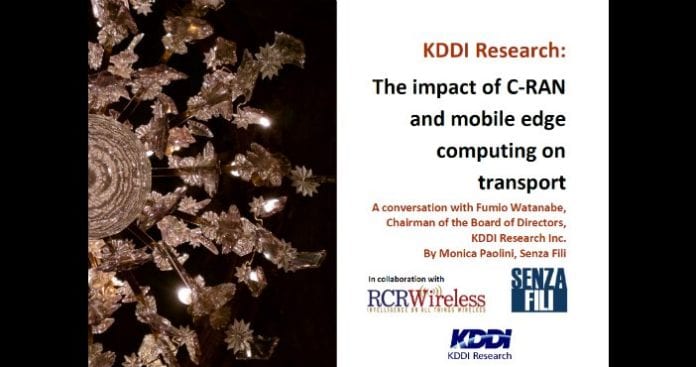A conversation on C-RAN with Fumio Watanabe, Chairman of the Board of Directors, KDDI Research, Inc
The below is only a summary. Download a transcript of the complete interview and be the complete in depth report “C-RAN and 5G take transport to new capacity and latency levels. Trends in backhaul, fronthaul, xhaul and mmW”.
KDDI has been one of the mobile operators at the forefront of Wi-Fi, small-cells and C-RAN deployments and, as a result, it has keenly explored fiber and wireless solutions for the backhaul and fronthaul.
Fumio Watanabe, the Chairman of the Board of Directors at KDDI in Japan, has been involved for a long time in devising the RAN and backhaul/fronthaul strategy for the operator. In this conversation, we talk to Fumio about the evolution and the latest technological trends in backhaul and fronthaul.
For KDDI, one limitation in C-RAN deploying is the CPRI interface, especially with the increase in the number of carriers and bands at the same site. In these sites, the capacity required for fronthaul increases rapidly, and, with it, the number of CPRI interfaces that are needed. And that increases the cost.
Ethernet is an alternative to CPRI, but the interface for control signal between the BBU side and the RRH side is not standardized. The physical lower layers use the Ethernet standard, but there is standardization work that still needs to be done for the higher layers.
In 4G the C-RAN was created as an improvement over the traditional D-RAN, which was quite simple. KDDI moved to C-RAN, but it now realizes that distributed architectures still have some advantages and plans to move back some of the RAN functionality to the edge.
This topic is discussed further in an exclusive webinar. Watch the webinar.

